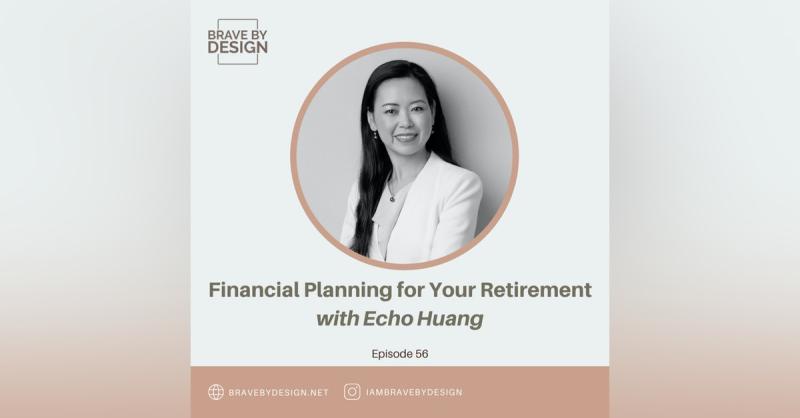By Fang Huang
•
September 28, 2022
According to LIMRA's 2022 Insurance Barometer Study, the secret to financial security is owning life insurance. Choosing the right products can help you to better protect your family’s lifestyle today and into the future. No matter what your age or situation is, owning a life insurance policy is an excellent family protection strategy. It allows you to leave an inheritance without your beneficiaries having to pay income tax on the death benefit they receive. Your beneficiaries could use the death benefit to replace your lost earned income and pay for essential expenses such as food, shelter, credit card bills, funeral or cremation costs, student and auto loans, medical bills not covered by health insurance, and so much more. It can also be used to provide extra support for retirement and the unexpected such as injury or illness. Whether you’re single, retired, or in any stage, life insurance can be a critical tool in a comprehensive financial plan. As a general rule of thumb, it’s an excellent idea to review your life insurance needs with a licensed financial professional every year to see where you stand regarding adequate coverage - should benefit increase or additional policies be necessary. Let’s explore how your life insurance needs may change according to the three primary stages of work and life. 1. Primary years (single and early career) Life insurance is often overlooked in the career establishment years, especially if you do not have a spouse or children who financially depend on you. The first step is to check with your employer and explore their benefits. Still, employer-sponsored policies typically offer coverage about 1-2 times your annual salary, which is a fraction of the coverage you may need. In addition, group life insurance coverage typically does not carry over with a job change. A good decision would be to purchase an individual or private life insurance policy outside of the workplace to supplement their coverage through work, especially if you have student loans or debt with a co-signer, support aging parents, or don’t wish to leave final expenses to family. Getting an early start on life insurance is smart as rates are typically much more affordable when you’re young and healthy. Generally, level-term life insurance (20 to 30 years) works well for people who plan to have children in the future. Level-term life insurance means the premium does not change during 20 or 30 years, unlike the group term policy through work. For example, it can cost $250,000 to raise a child, and you have a student loan balance and a mortgage, paying less than $500 per year could potentially have $1 million coverage when you are under age 30 and healthy. 2. Growth years (married with children and mid-career) At this stage, the need for life insurance coverage typically increases with your growing family and career advancement, so be wise in how you structure your policies. Consider the coverage you need to replace future lost earned income and any large debts that would burden your loved ones. In addition, factor in the cost of raising your children through college and add emergency savings for economic and lifestyle disruptions. Employer-sponsored life insurance benefits are typically not enough for your dual-income and household expenses, so consider increasing the benefits on your existing policy and purchasing life insurance for your spouse and children are great ways to help with maintaining adequate coverage for the entire family. Suppose your income is high and you have maximized contributions to all retirement plans. In that case, you can consider buying a permanent life insurance policy that has cash value and will pay the death benefits regardless of how long you live. The cash value can be invested, and the earnings are not taxed each year which helps you pay for the cost of insurance. 3. Empty nest (estate/retirement planning and late-career) In your final working years, you may have set aside a good bit of savings for retirement, but planning for your financial future doesn’t stop here. As you get older, you could tap into the cash value from your life insurance policy to help supplement your retirement income and may avoid paying income taxes on the earnings if you choose to borrow from the cash value. The unpaid loan balance will reduce the death benefit, which is all right as your beneficiaries may not need as much death benefit when you are retired and much older. The primary purpose of life insurance changes from income replacement to wealth transfer when you have accumulated enough assets to retire. If your estate is over $3 million, including the death benefit of your life insurance policies, consider advanced estate planning to reduce potential estate taxes. For Minnesotans, the estate exemption is $3 million per person for 2022, which means you may need to pay 13% to 16% Minnesota estate tax on the amount that exceeds $3 million. Federal estate exemption is $12.06 million for 2022, but it may be cut in half after the year 2024. The amount above the estate exemption amount is subject to a 40% federal estate tax. If you would like to minimize the shrinkage of your nest egg, using proper life insurance can be a solid strategy to address estate tax exposure. Setting up an irrevocable life insurance trust (ILIT) to own your existing permanent life insurance policies or buy a new one can remove the death benefit from your estate. In addition, you can gift annually to the trust to pay for the insurance premiums over time to further reduce your estate. Take advantage of an annual gift exclusion of $16,000 for 2022 and $17,000 for 2023 to fund the ILIT. You may not need to use much of your lifetime gift exemption as you file your gift tax return (Form 709). The ILIT with Crummey power gifts remains one of the most powerful estate planning tools for high-net-worth individuals. Done properly, you avoid entirely gift tax, estate tax, and income tax on your legacy to future generations. For business owners with most of their net worth in their business, liquidity is an issue as the estate taxes are due nine months from the day of death. To preserve the business for the next generation and to avoid selling stock portfolios during market decline to pay estate taxes, consider using life insurance to provide the money to pay estate taxes efficiently. Life insurance policies and tax laws are complicated, and they keep changing. I recommend you work with your trusted advisor who can help you assemble a financial dream team, including an estate attorney, a tax CPA, and a life insurance agent to give you customized recommendations and help you implement the strategies. Whether you have general or specific questions about life insurance, you can schedule a meeting with an Echo Wealth Management team member at any time. We'll be happy to answer your concerns and help you to find the right policies to achieve adequate coverage at every stage of your life.











